
Melanie Verlinden
melanie.verlinden@uantwerpen.bePostdoctoral Researcher
Dr. Verlinden Melanie was appointed as technical assistant for a short period of time to support the measurement campaign in French Guyana.


Prof. Dr. Michael Obersteiner (IIASA)
oberstei@iiasa.ac.atMichael will provide improved understanding and quantitative foresight needed to formulate a range of policy options aiming to manage risks associated with the stoichiometric imbalances. His team at IIASA will generate this knowledge through theory building, economic and integrated assessment modelling which will be integrated with the Earth system models. Michael will also support and link to international processes to establish science-based P-diplomacy.



Dr. Jordi Sardans (CREAF-CSIC)
j.sardans@creaf.uab.catStudy the impacts of N loadings on soil-plant-atmosphere system shifts and their relationships with P concentration N:P ratio and general elemental composition and stoichiometric shifts. Study the impacts of nutrient imbalances in human ecology and nutrition.



Joke Van den Berge
joke.vandenberge@uantwerpen.beResearch Manager
I coordinate and support the field studies and researchers in French-Guyana.

Bruno Hérault
Bruno.Herault@ecofog.gfCollaborator
Scientific Director of the Paracou long-term experimental station, one the P-Imbalance focal site

Dr. Philippe Hinsinger (INRA-UMR Eco&Sols Montpellier)
philippe.hinsinger@supagro.inra.frCollaborator
Specialist of soil P biogeochemistry and plant nutrition, and of the fate of P availability in the rhizospher

Dr. Balzarolo Manuela
Manuela.Balzarolo@uantwerpen.beResearch fellow
Expert in remote sensing, ecological modelling, ecosystem carbon and water dymanics

Dr. Sebastian Wieneke
Sebastian.Wieneke@uantwerpen.bePostdoc researcher
In my studies I focus on developing new methods to assess the photosynthetic energy balance by using remotely sensed sun-induced chlorophyll fluorescence and gas-exchange measurements.

Sophie-Charlotte Bundle
bundle@iiasa.ac.atResearch Scholar
Sophie-Charlotte Bundle joined IIASA as a research scholar with the Ecosystems Services and Management Program (ESM) in November 2014. With ESM, she is working on a global model simulating agricultural production costs. In context with the imbalance P project Sophie will assess economics of C,N,P cycle and their effects to agricultural production, prices for agricultural products and changes in most economic management systems. Further to that Sophie will analyze the economics of C,N,P cycle and their effects on Fertilizer Industry (e.g. economic feasibility studies for new technologies to recover phosphor from sewage, manure etc).
Further information: http://webarchive.iiasa.ac.at/ifinger/n/index.html?login:^bundle%24:11:895:not^:nov^#cell_bundle

Prof. Dr. Stephan A. Pietsch
pietsch@iiasa.ac.atResearch Scholar
Stephan will assess changes in resilience status of tropical ecosystems in response to management impacts, nutrient limitation and climate change. In particular, he will assess traditional land use forms like shifting cultivation, forest exploitation as well as savannah burning and grazing using a mechanistic modelling approach.

Dr. Ligia B. Azevedo (IIASA)
azevedol@iiasa.ac.atI will further develop the EPIC model by including biogeochemical mechanisms of nitrogen, phosphorus, and carbon of animal waste. I will also improve the representation of the phosphorus cycle in EPIC and employ the model to estimate yields under various scenarios of limited agricultural amendments.

Dr. Iolanda Filella (CREAF-CSIC)
i.filella@creaf.uab.catDevelopment of remote sensing techniques to assess plant and ecosystem functioning, global and climate change effects on the structure and functioning of Mediterranean ecosystems, mechanisms and functions of plant-emitted volatile organic compounds.
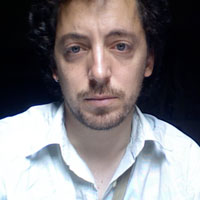
Dr. Jofre Carnicer (University of Barcelona – UB and CREAF-CSIC)
jofre@creaf.uab.catPlant-herbivore interactions, arthropod biodiversity responses, wood growth and dendroecology.

Dr. Marc Peaucelle (CREAF-CSIC)
marc.peaucelle@lsce.ipsl.frPostdoctoral Researcher
I am an environmental scientist currently working on the representation of plants in global terrestrial biosphere models.
I'm particularly interested in the interactions between the vegetation and their environment, but also their ability to face environmental changes.
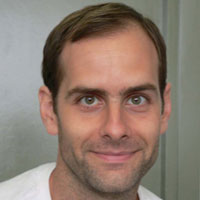
Dr. Romà Ogaya (CREAF-CSIC)
r.ogaya@creaf.uab.catGlobal change effects in plant ecophysiology. Climate change and nitrification effects in plant photosynthetic activity, chlorophyll fluorescence, water relations, and ecosystem productivity.

Dr. Dolores Asensio (CREAF-CSIC)
loles@creaf.uab.catSoil enzyme activity, microbial biomass, microbial stoichiometry, soil VOCs.

Dr. Marcos Fernández-Martínez
marcos.fernandez-martinez@uantwerpen.bePostdoc researcher
Junior coordinator of the IMBALANCE-P
My main contribution to the IMBALANCE-P project is to gather, ensemble and analyse different ecological databases with the aim of studying the effect of nutrient availability, biodiversity and climate on forest features, productivity and carbon balance from a macroecological perspective.

Lucia Fuchslueger
lucia.fuchslueger@uantwerpen.bePostdoc researcher
I will study microbe mediated soil nutrient cycling in tropical and arctic ecosystems.

Dr. Xavier Domene (CREAF)
x.domene@creaf.uab.catResearch Scholar
Soil science, soil biology, ecotoxicology, soil quality indicators, soil ecosystem services and biochar.

Dr. Yves Balkanski (LSCE-UVSQ)
balkansk@lsce.ipsl.frCoupling of biogeochemical cycles in Earth System Models, Effect of aerosols on climate.

Dr. Adrià Barbeta (CREAF-CSIC)
a.barbeta@creaf.uab.catI am focused on the development of tree-ring chronologies within gradients of nutrient availability in French Guiana and in fertilization experiments, using classical dendrochronological approaches plus tree-ring isotopes techniques.
I am also interested in the effects of experimental fertilization and nutrient availability on the linkage between belowground water movement mediated by roots (hydraulic lift and downward siphoning) and root nutrient uptake. More generally, I would like to explore the effect of nitrogen addition and/or phosporus limitation on plant water relations of tropical, mediterranean and temperate forests.

Irene Ramírez Rojas
Irene.RamirezRojas@uantwerpen.bePhD Student
Soil microbial community composition

Dr. Marc Estiarte (CREAF-CSIC)
m.estiarte@creaf.uab.catClimate change effects on ecosystem productivity, plant phenology and soil gas exchange. Climate change experiments on natural ecosystems.

Dr. Alejandro Castellanos Villegas
a.castellanos@creaf.uab.catResearch professor at Universidad de Sonora
Plant ecophysiology and functioning of arid ecosystems
Current projects:
- Changes in plant cover and impacts of livestock farming. Research on ecological and socio-economic interactions.
- Stoichiometric ecology and remote perception of the analysis of spatial distribution and invasibility of Cenchrus ciliaris in North Eastern Mexico.

Dr. Francesc Sabater i Comas
fsabater@ub.eduProfessor
Linking aquatic and terrestrial ecosystems, nutrient cycling in freswhater and riparian forest ecosystems.

Dr. Yongshuo Fu
Former collaborator

Dr. Laynara Figueiredo Lugli
If313@exeter.ac.ukPostdoctoral researcher
Post doc working working on root identification and characterization in response to fertilizer treatments. Responsible for the root sampling during the wet and dry season measuring campaigns of 2019 in French Guiana.

Sílvia Poblador
silvia.poblador@uantwerpen.bePostdoctoral researcher
Greenhouse gas emissions, soil nitrogen cycle and soil microbial communities responses to different agricultural management practices

Dr. Rossella Guerrieri
r.guerreri@creaf.uab.catPostdoctoral Marie Curie fellow
My research activities have aimed to gain a deep understanding of the coupled C-N-H2O cycling in forests, by linking different scales of investigations, i.e., from the tree to the ecosystem, and methodological approaches (e.g., stable C and O isotopes in leaves and tree rings, eddy covariance data). During my Marie Curie fellowship at the CREAF I will focus on tree canopies and their role in altering the chemical composition of precipitation and, consequently, the nutrient cycling within forests. I will explore the biological diversity hidden in the canopies, particularly bacteria, and its role in processing the atmospheric N.
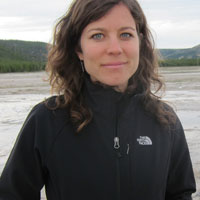
Dr. Mireia Bartrons (CREAF-CSIC)
mireia.bartrons@creaf.uab.catFood web and ecosystem ecology. I'm interested on the effects of P shortages and N to P stoichiometric imbalance at organism and community level through the use of metabolic state markers, stable isotopes and organic pollutants. We will focus on soil-plant-arthropod communities across environmental gradients of nutrients, water and temperature in Guiana, Catalonia and Iceland.

Dr. Olivier Boucher (LSCE-UVSQ)
Olivier.Boucher@lmd.jussieu.frResearch interests: Climate change, regional to global air pollution, aerosol-radiation-cloud interactions, data assimilation of satellite observations in atmospheric models for monitoring the atmospheric composition of the atmosphere, atmosphere-biosphere couplings and biogeochemical feedbacks in the Earth System, impact of irrigation on climate, impact of aviation on climate, climate mitigation policies, climate metrics, and integrated assessment modelling, geoengineering, climate-energy nexus.

Dr. Benjamin Stocker
Postdoctoral Marie Curie fellow
I am a climate and environmental scientist with a special interest in interactions between climate change and terrestrial ecology and biogeochemistry. My work is dedicated to providing data-informed predictions of how land ecosystems respond to a changing climate, increasing CO2 and changes in nutrient cycles. I'm developing numerical models, as simple as possible and as complex as necessary to learn the most.

Dr. Manuela Balzarolo
Manuela.Balzarolo@uantwerpen.bePostdoctoral Marie Curie fellow
My main research topic is the application of proximal and remote sensing techniques to explore the terrestrial ecosystem biochemical responses to climate change and drought. I’m currently working on modelling ecosystem phenology, productivity, carbon and water fluxes and by using satellite observations from different sensors.
Project name: INDRO - Remote sensing INdicators for DROught monitoring

Dr. Marta Camino (CREAF-CSIC)
m.camino@creaf.uab.catPostdoc researcher
My work focuses on improving the representation of soil C dynamics in the soil module of the land surface model ORCHIDEE. More specifically, I am implementing and validating a new representation of the leaching of dissolved organic carbon (DOC) from soil into rivers and of 13C in soil.
Former collaborator at the University of Antwerp

Dr. Matteo Campioli (Antwerp University)
matteo.campioli@uantwerpen.bePlant growth, net primary production and ecosystem C allocation.
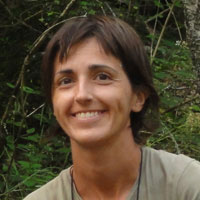


Dr. Ander Achotegui (CREAF-CSIC)
a.achotegui@creaf.uab.catIn Imbalance-P, my research will focus on floral volatile emissions, studying how dependent they are on nutrient availability. I will also investigate if these possible changes have effects on pollinator attraction and pollination success.

Dr. Gerard Farré (CREAF-CSIC)
g.farre@creaf.uab.catGerard Farré Armengol is biologist for the Autonomous University of Barcelona. He is doing his PhD thesis at the Global Ecology Unit CREAF-CEAB-CSIC studying the biotic and abiotic factors that affect the emissions of volatile organic compounds (VOCs) by flowers, as well as the effects of changes in floral emissions on the plant-pollinator interaction.


Dr. Christian Folberth (IIASA)
folberth@iiasa.ac.atI contribute to the development and applications of the EPIC model to better represent P flows in agriculture and specifically grasslands. Another focus of my work is on assessing flows and stoichiometry of N and P in agricultural trade and production globally.

Dr. Oskar Franklin (IIASA)
franklin@iiasa.ac.atI will synthesize and integrate empirical results for development of new theory and predictive models. In particular, I will focus on the role of plant-soil microbial interactions for phosphorus and nitrogen uptake and growth of plants and forests.
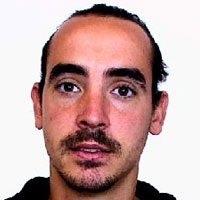
Dr. Albert Gargallo (CREAF-CSIC)
a.gargallo@creaf.uab.catMetabolome of phosphorus in soil and plant by 31P NMR.

Dr. Daniel Goll (LSCE-UVSQ)
daniel.goll@lsce.ipsl.frDevelopment and application of the dynamic global vegetation model ORCHIDEE. The model simulates cycles of carbon, nitrogen and phosphorus across multiple spatial and temporal scales. The aim is to advance the understanding of the biogeochemical cycles and their interactions with the climate system.

Dr. Oriol Grau (CREAF-CSIC)
Oriol.grau@creaf.uab.catI am currently working as a postdoctoral researcher at the Global Ecology Unit (CREAF-CSIC-UAB, Catalonia). My research combines several disciplines in Ecology: plant biology, fungal biology, community structure, functional ecology, ecosystem dynamics, plant-soil interactions and diversity patterns. I have been doing research on contrasting ecosystems across the world: in alpine (Pyrenees, Himalaya), subarctic (Scandes), arctic (Greenland), tropical (French Guiana), and in mediterranean regions (Catalonia). I have conducted observational and experimental studies in most of these regions to analyse the effects of environmental variability on ecosystem functioning.
For more information you can e-mail me (grau.oriol@gmail.com) or check the website: https://www.researchgate.net/profile/Oriol_Grau
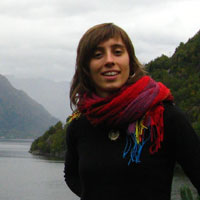

Dr. Bertrand Guenet (LSCE-UVSQ)
bertrand.guenet@lsce.ipsl.frDuring the P-Imbalance project I will improve the soil scheme of the land surface model ORCHIDEE to better represent the P cycle in the soil. First, I 'll be in charge of the merge between the different versions which need to be associated for the project. Then I will co supervise the post doc and the Ph. D student who will devellop the weathering and the explicit representation of soil microorganisms. Finally, I will participate to the evaluation of the new version of ORCHIDEE including nitrogen and phosphorous cycle.

Dr. Matthieu Guimberteau (LSCE-UVSQ)
matthieu.guimberteau@upmc.frWater and carbon cycles modeling with ORCHIDEE and systematic validations for different versions of the model.

Dr. Didier Hauglustaine (LSCE-UVSQ)
didier.hauglustaine@lsce.ipsl.frAtm N cycle with LMDZ INCA model

Emilie Joetzjer (LSCE-UVSQ)
emilie.joetzjer@gmail.comMy research focuses on understanding the carbon and water cycle in tropicalforest. During my post doctoral fellowship at Montana State University, I will work with B Poulter to better account for tropical forest "diversity" in the ORCHIDEE/DOFOCO (ORCHIDEE-CAN) Dynamic global vegetation model through the incorporation of plant functional types based on different traits, related to drought tolerance or resistance, phosphorus and nitrogen economy. Strong collaborations with the Imbalance-P field experiments and model developments are planned.

Adrià Descals (CREAF-CSIC)
Technician
Algorithm development for the estimation of biophysical variables (LAI, FAPAR, and FCOVER) from Sentinel-3 observations, using existing satellite products and synthetic data sets as training data for machine learning models.
Project: C-GLOPS1 project




Dr. Nikolay Khabarov (IIASA)
khabarov@iiasa.ac.atI will analyze the international trade statistics in fertilizer market with a specific focus on phosphorous containing fertilizers and raw materials. The primary goal will be the exploration of exporter/importer relationship among the largest market players. Here a particular emphasis will be put on the analysis of price peaks and respective change in traded quantities. The possibility to build and calibrate an international fertilizer market model will be explored at different temporal resolutions.

Niki Leblans (Antwerp University)
Niki.leblans@uantwerpen.bePhD student working in Iceland. My research focuses on warming impact on grassland ecosystem functioning, plant phenology response to warming and stoichiometry changes in plants along temperature gradients.

Daijun Liu (CREAF-CSIC)
d.liu@creaf.uab.catI focus on global change effects on forest ecosystem structure and function, especially on ecophysiological and demographical changes. I will study climate change and nutrient availability on forest growth, tree mortality and species recruitment, richness and vegetation productivity.

Dr. Lei Liu (CREAF-CSIC)
liulei406@gmail.comI’m interested in soil microbial mediation of ecosystem response to global changes in land use, nitrogen deposition, carbon, nitrogen and phosphorus cycling, with a particular focus on tropical forests. Besides, my work also included soil functional microorganisms such as mycorrhizal fungi which involved in P cycle response to global climate change.

Dr. Fabienne Maignan (LSCE-UVSQ)
fabienne.maignan@lsce.ipsl.frLSCE technical manager for the ORCHIDEE model (code management, versioning, validation, evaluation at global scale), in collaboration with M. Gimberteau.

Nicolas Najdovski (LSCE & Montana State University)
nicolas.najdovski@msu.montana.eduMy research focus on modeling the tropical forest carbon stocks and stand structure and how human activities impact them using ORCHIDEE-CAN.

Christian Ranits
christian.ranits@gmail.comMaster student
Worked on root and soil sampling during the wet season campaign of 2019 in French Guiana. Analysed soil samples for microbial biomass and nutrient turnover rates.

Dr. Brooke Mayer
brooke.mayer@marquette.eduVisiting scientist
The Mayer Lab Group focuses on the design and assessment of more sustainable water and wastewater treatment technologies that are able to simultaneously mitigate the risks posed by microbial and chemical contaminants.

Dr. Guille Peguero (CREAF-CSIC)
guille.peguero@creaf.uab.catWithin IMBALANCE-P I’m going to study the bottom-up effects of nutrient imbalances at local and regional scales on the composition and phylogenetic structure of soil mesofaunal communities.
I’d like to take advantage of recently developed metabarcoding techniques to uncover cryptic diversity and to infer potential mechanisms of community assemblage in poorly known taxonomic groups such as springtails and mites.

Dr. Shushi Peng (LSCE-UVSQ)
Shushi.Peng@lsce.ipsl.frGenerally, carbon cycle, nitrogen cycle and phosphorus cycle are full coupled in nature, apart from other biogeochemical cycles. However, these biogeochemical cycles have not been coupled in our land surface model yet. I am interested in modeling phosphorus cycle in land surface model (ORCHIDEE), and testing hypotheses about feedbacks of these coupled biogeochemical cycles on climate.

Dr. Albert Rivas (CREAF-CSIC)
a.rivas@creaf.uab.catMy expertise is in the field of Ecometabolomics to understand how metabolomes of organisms shift under environmental changes. In IMBALANCE-P I will apply ecometabolomics techniques to systems such as atmosphere (atmo-ecometabolomics) and soils (community ecometabolomics).

Dr. Catherine Preece (CREAF-CSIC)
c.preece@creaf.uab.catMy project will investigate the mechanisms determining interactions between plants, soil micro-organisms, soil fertility and climate in Mediterranean ecosystems. I will determine how increased drought affects these interactions with a particular focus on root exudates, which provide a link between plants and the soil community. This will ultimately increase our understanding about the importance of soil communities for ecosystem stability.

Dr. Laura Rico (CREAF-CSIC)
l.rico@creaf.uab.esResearch experience in Plant Molecular Biology applied to Molecular Ecology, Plant Genetics, Plant Biology and Genetic resources.

Dr. Rastislav Skalsky (IIASA)
skalsky@iiasa.ac.atRastislav Skalsky will focus on setting up data infrastructures and running EPIC model to find more on the uncertainties coming up in hand with using the global and regional scale spatial data on soil, topography and land use in large-scale P cycling estimates in agricultural sector.

Dr. Jennifer Soong (Antwerp University)
Jennifer.soong@uantwerpen.beSoil organic matter formation and decomposition, plant-soil-atmosphere carbon transfer, and soil C-N-P relationships.

Dr. Clément Stahl (Antwerp University)
Clement.Stahl@ecofog.gfResponsible for the ecosystem and ecosystem ghg flux measurements at the sites.

Leandro Van Langenhove (Antwerp University)
leandro.vanlangenhove@uantwerpen.beN2 fixation in Guiana.

Dr. Sara Vicca (Antwerp University)
sara.vicca@uantwerpen.beCarbon allocation research in French Guyana.

Lore Verryckt (Antwerp University)
lore.verryckt@student.uantwerpen.beI will measure leaf level gas exchange and simulate plot level photosynthesis to study aboveground respiration and tree carbon allocation.

Dr. Erik Verbruggen (Antwerp University)
erikverb82@hotmail.comMycorrhizal diversity and functioning.

Dr. Constanti Stefanescu (CREAF-CSIC)
canliro@gmail.comPlant-herbivore interactions, arthropod biodiversity responses.

Ifigenia Urbina (CREAF-CSIC)
i.urbina@creaf.uab.catAbiotic and biotic factors determinants of elemental stoichiometry in terrestrials ecosystems.

Paolo Zuccarini
p.zuccarini@creaf.uab.catMy profile is that of an agronomist/environmentalist specialized in plant ecophysiological responses to abiotic stresses in the frame of Climate Change, and in nutrient cycling in agricultural and forest ecosystems.

Dr. Aleixandre Verger (CREAF-CSIC)
verger@creaf.uab.catRemote sensing, vegetation-climate dynamics.

Dr. Aurélie Violette (LSCE-UVSQ)
Aurelie.Violette@lsce.ipsl.frThe geochemical model WITCH calculates mineral weathering fluxes and the corresponding chemistry of the soil solution. The coupling of ORCHIDEE and WITCH models will enable to investigate the mineralogical P production by weathering and its feedback to the vegetation cycle.
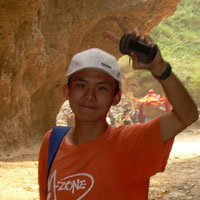
Dr. Rong Wang (LSCE-UVSQ)
rong.wang@lsce.ipsl.frOur group (LSCE) have estimated the global budget of phosphorus (P) in the atmosphere by quantifying various sources of P with the uncertainties quantified. Using a new approach based upon the mass balance of P, the emissions of P from biomass and fossil fuel combustion were estimated, which were higher than all previous estimates due to inclusion of P emitted in all phases and particle sizes. As a result, a near closure of the P budget was achieved in the atmosphere.



Dr. James Weedon (Antwerp University)
james.weedon@uantwerpen.beFormer collaborator
I will conduct research into the effects of variation in nutrient status, climate and microsite characteristics on soil microbial communities and the functions they perform.

Dr. Yi Yin (LSCE-UVSQ)
yi.yin@lsce.ipsl.frP mobility in soil to the root uptake is one of the limiting factors for plant use, alongside with P mineralization by microbes and fungi. Thus, for modeling the uptake of P by plants, the processes of P diffusion and sorption need to be considered. I will work on a simple process based 1-D root uptake sub-model in the soil water transport of ORCHIDEE and also dynamic root growth to coupe with the vertical transport.

Chao Zhang (CREAF-CSIC)
c.zhang@creaf.uab.catI focus on the response of ecosystem function and structure to climate change based on remote sensing technique. The objective is to assess the influence of climate change on carbon fixation at different temporal and spatial scales using photochemical reflectance index and fluorescence.

Kevin Van Sundert
kevin.vansundert@student.uantwerpen.bePhD student
My PhD project is called ‘Elucidating the role of nutrient availability and mycorrhizae in the drought response of terrestrial ecosystem carbon cycling’. It includes field work at drought experiments in Austria and Germany and a meta-analysis.

Petra Devers
Collaborator
Collaborating with Guyana's field campaing.

Laurie Lefebvre
Collaborator
Collaborating with Guyana's field campaing.

Stefan Van Beveren
Collaborator
Collaborating with Guyana's field campaing.

Anna Mégier
Collaborator
Collaborating with Guyana's field campaing.

Noé Obersteiner
Collaborator
Collaborating with Guyana's field campaing.

Nele Smeyers
Master student

Kris Meus
Master student

Anaïs Hannouz
Master student

